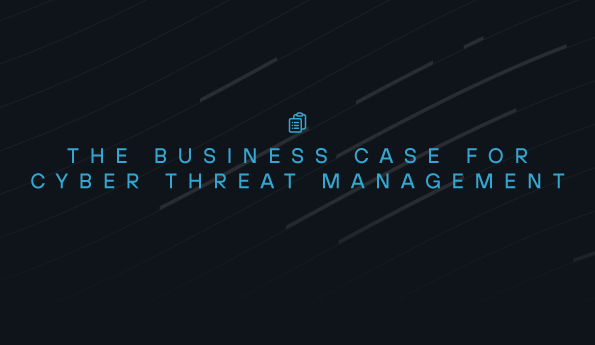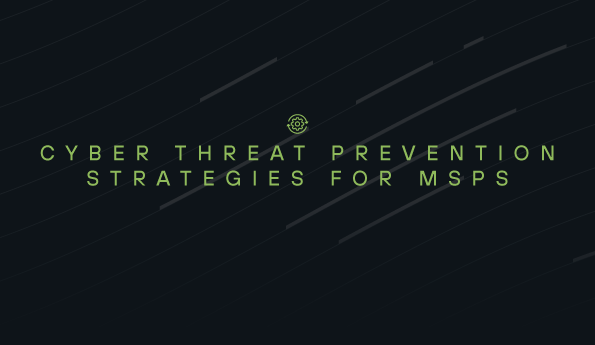How Conditional Access Transforms Your Cybersecurity Program
In today's digital landscape, securing IT systems is more crucial than ever. Cyber threats are evolving, and traditional security measures often fall short. Conditional access offers a modern solution to these challenges. It tailors access to resources based on specific conditions, enhancing security.
As such, conditional access forms a cornerstone of a zero trust security approach. It assumes threats can come from anywhere, inside or outside the organization. By implementing conditional access policies, businesses can better protect their data and systems.
Conditional access is not just about security. When users meet required conditions, they can seamlessly access their resources. This balance between security and usability makes it an essential component of any robust cybersecurity framework.
Understanding Conditional Access
Conditional access is a strategy that limits access to resources based on security controls and other predefined conditions. By controlling access, it helps to prevent unauthorized entry and data breaches.
This approach ensures that access is granted only if certain criteria are met. It provides a fine-tuned method for safeguarding IT systems. Doing so equips organizations to better anticipate and mitigate potential threats.
What is Conditional Access?
Conditional access is a security protocol that adjusts access permissions based on specific requirements. This approach tailors access on factors like user identity, location, and device compliance. It means only authorized users gain access under secure conditions.
Conditional access relies on factors like:
- User identity: Verifying users before granting access.
- Device compliance: Ensuring devices meet security standards.
- Location constraints: Limiting access based on geographic location.
Such factors are essential in creating a secure IT environment. They ensure users adhere to security standards before access is granted.
The Importance of Conditional Access in Cybersecurity
In cybersecurity, conditional access plays a vital role in securing sensitive data. It forms an integral part of a proactive security strategy by mitigating threats before they escalate.
Key benefits include:
- Threat prevention: Blocking unauthorized access effectively.
- Compliance: Meeting industry standards and regulations.
- Flexibility: Adapting to shifting threat landscapes.
Implementing conditional access helps organizations stay ahead of evolving threats, a crucial component for any holistic cybersecurity program.
Key Components of Conditional Access
Conditional access leverages several key components to strengthen IT security. These elements work together to ensure secure and efficient access control.
Multifactor Authentication (MFA)
Multifactor Authentication (MFA) is a critical layer in conditional access. It requires users to provide multiple forms of verification before access is granted. This typically includes something the user knows, has, and is.
As such, MFA provides:
- Enhanced security: Reduced risk of unauthorized access.
- Identity verification: Ensures user authenticity.
- Flexibility: Adapts to various security needs.
By implementing MFA, organizations can significantly bolster their defenses against potential breaches. It acts as a vital deterrent against credential-based attacks.
Network Access Control (NAC)
Network Access Control (NAC) controls how devices access network resources. It ensures only compliant and authenticated devices can connect. NAC checks are vital for maintaining a secure network environment.
NAC ensures:
- Device compliance: Checks device security posture.
- Access restrictions: Limits network access as needed.
- Real-time monitoring: Detects and responds to threats.
NAC works to secure network entry points, minimizing the risk of infected devices accessing critical resources. This proactive approach keeps networks safer.
Role-Based Access Control (RBAC)
Role-Based Access Control Access Control (RBAC) simplifies access management by assigning permissions based on user roles. Each role corresponds to a set of responsibilities and access needs.
Advantages of RBAC include:
- Simplified management: Streamlines user access control.
- Least privilege principle: Users access only necessary data.
- Scalability: Easily adapts to growing organizations.
RBAC ensures that users have the right level of access, preventing unnecessary exposure to sensitive information. This structure is essential for efficient and secure resource management.
Defining Conditional Access Policies
Implementing conditional access policies involves defining specific conditions for resource access. This process requires careful evaluation of organizational needs, including:
- Assessing risks: Identify potential threats.
- Defining policies: Create tailored access conditions.
- Routine updates: Adapt to evolving security landscapes.
By following these steps, organizations can enhance their security posture efficiently.
The Zero Trust Security Approach
The Zero Trust Security approach assumes no inherent trust, whether inside or outside the network. This approach minimizes the risk of breaches. It focuses on verifying every access request through the following core principles:
- Continuous verification: Authenticate users consistently.
- Least privilege access: Grant minimal necessary permissions.
- Network segmentation: Isolate and secure network parts.
Adopting Zero Trust requires a shift from traditional security models. It demands more focus on user verification and data protection.
How Conditional Access Aligns with Zero Trust Principles
Conditional access aligns seamlessly with Zero Trust principles. Both aim to limit access based on specific criteria. This alignment strengthens an organization’s security strategy through:\
- Strict access controls: Validate each access attempt.
- Regular monitoring: Observe access behaviors.
- Dynamic policies: Adjust to evolving threats.
As such, conditional access and zero trust combine to make a robust security framework.
Benefits of Conditional Access for Cybersecurity
Conditional access significantly bolsters cybersecurity by providing targeted security measures. It enhances protection against unauthorized access, leading to several key outcomes.
Enhanced Threat Mitigation
Conditional access is crucial for threat mitigation. It reduces the likelihood of unauthorized access. By verifying access attempts, it prevents potential breaches, relying on:
- Real-time monitoring: Constantly track user activities.
- Adaptive responses: Adjust policies based on threats.
- Suspicious activity alerts: Notify administrators of anomalies.
These strategies allow organizations to proactively manage security threats. Enhancing threat mitigation ensures a more secure IT framework.
Improved Compliance and Risk Management
Many organizations are required to meet various compliance standards. Conditional access facilitates adherence to these standards by providing evidence of:
- Policy enforcement: Ensure all access aligns with regulations.
- Audit trail creation: Maintain records of access attempts.
- Risk reduction: Identify and mitigate potential threat vectors.
Utilizing conditional access helps manage risks effectively. This improves overall organizational security and proves adherence to government and industry compliance standards.
Increased Flexibility and Efficiency
Conditional access introduces flexibility and efficiency to access policies. It adapts to changes within the IT environment to keep organizations ahead of threats via:
- Dynamic access control: Adjust based on user needs.
- Streamlined processes: Simplify user authentication.
- Resource optimization: Allocate resources efficiently.
These advantages support a responsive security framework. By embracing flexibility, organizations improve efficiency in their operations without compromising security.
Implementing Conditional Access for a Robust Cybersecurity Program
Embracing conditional access is a strategic move for any organization. It forms a cornerstone of a robust cybersecurity program. By integrating conditional access, organizations enforce tailored security measures that adapt to emerging threats.
For MSPs, the real challenge isn’t why to deploy conditional access. Rather, it’s how to operationalize it across diverse client environments without adding complexity. That’s where Todyl SASE and SIEM make a major difference.
Leverage Static IPs for Routing Precision
With Todyl SASE, partners can assign static IP addresses that allow them to create highly specific conditional access rules. Instead of relying on broad geographic ranges or device checks alone, static IPs provide an anchor of trust. MSPs can define access policies that only permit traffic from known geolocations to reduce the risk of identity attacks.
Seamless Microsoft Entra ID Integration
Todyl’s native Entra ID integration gives MSPs a direct path to apply conditional access policies across deployments. By tying identity and network together, partners can enforce conditional access policies across the entire Microsoft ecosystem. MFA on high-risk sign-ins, blocking untrusted locations, and requiring device compliance all ensure a smooth user experience.
Scalable Rollouts Across Clients
Instead of managing these policies piecemeal, MSPs can standardize conditional access templates across multiple client tenants. That allows partners to deliver enterprise-grade security in a repeatable, efficient model that scales with their business.
In practice, conditional access through Todyl becomes more than a checkbox for compliance. It provides a practical way to lock down client environments, prevent unauthorized access, and demonstrate measurable security improvements.
Contact us today to see conditional access and the rest of the capabilities of the Todyl platform in your own personalized demo and trial.
See Todyl in Action
Learn how you can protect what you built.
Stay on the Cutting Edge of Security
Subscribe to our newsletter to get our latest insights.



